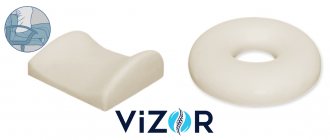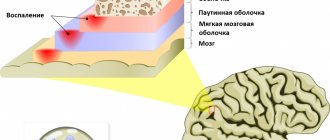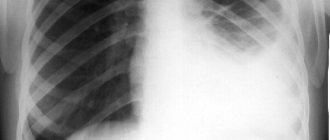The hip joints experience the greatest load in the body. They are created by weight during walking, jumping, running, lifting and carrying heavy objects. Patients often feel pain in the hip joint. Orthopedists at the Yusupov Hospital determine its cause using modern diagnostic equipment. Doctors determine the degree of joint damage, which allows them to make an accurate diagnosis and develop optimal treatment tactics.
Doctors at the Yusupov Hospital provide complex therapy for diseases that cause pain in the hip joint. Patients are individually selected effective medications that affect the cause and mechanism of development of pain. Rehabilitation clinic specialists provide rehabilitation therapy using the latest physiotherapeutic procedures, physical therapy, and acupuncture. The presence of special simulators allows you to reduce the load on the joint during training.
In the process of treating pain in the hip joint, doctors from many areas of medicine are involved: endocrinologists, rheumatologists, orthopedists, physiotherapists, chiropractors, acupuncturists. A multidisciplinary approach to the treatment of pain in the hip joint allows for rapid pain relief. Patients suffering from pathology of the hip joints often require outside care. It is professionally carried out by the staff of the Yusupov Hospital who have undergone special training.
Causes
Pain in the hip joint is caused by the following pathological processes:
- Tendinitis (inflammation of tendons);
- Muscle rupture;
- Iliotibial band syndrome;
- Other local changes in surrounding tissues;
- Systemic diseases (rheumatoid arthritis, polymyalgia).
Because the gluteus medius and minimus muscles play a major role in hip abduction, damage to them causes hip pain.
The gluteus medius and minimus tendons attach to the greater trochanter. If an inflammatory process develops in them due to microtraumas resulting from excessive load, the patient will be bothered by pain in the hip joint. Such disorders may be caused by an infectious process (tuberculosis), sports or stereotypical professional stress, or the deposition of crystals. Hip pain is a symptom of the following diseases:
- Osteoarthrosis;
- Radicular syndrome;
- Rheumatoid arthritis;
- Coxita.
Pain in the hip joint can bother people who are overweight, have different leg lengths, or have flat feet.
Pain syndrome can occur after lower limb amputation or hip replacement. With avascular necrosis of the head and fracture of the femoral neck, patients complain of acute pain in the hip joint. Pain syndrome often develops with dysplasia (disorder of the anatomical structure) of the hip joint. Acute pain in the hip joint, radiating to the leg, occurs in the case of pinched nerves due to diseases of the spine, malignant bone tumors, and age-related changes. Make an appointment
Legg-Calvé-Perthes disease
Legg-Calvé-Perthes disease, bone destruction not associated with infection, primarily affects children and adolescents.
(if the table is not completely visible, scroll to the right)
| Causes | Unknown. |
| Symptoms | Pain in the leg and joint, lameness. |
| Treatment | Children are sent to sanatoriums for treatment. It is necessary to unload the joint (bed rest, walking with crutches). Medications include drugs that improve microcirculation (no-spa), antiplatelet agents (trental), and multivitamins. Carry out therapeutic exercises. The treatment process is long, but usually the disease can be completely eliminated. |
Examination methods
During the first consultation, rheumatologists at the Yusupov Hospital conduct a comprehensive examination of the patient:
- Collection of complaints, clarification of the nature of pain in the hip joint;
- Obtaining information about the course of the disease, the onset of pain, the progression of pain, household and professional factors that, in the patient’s opinion, caused the pain;
- An external examination allows the doctor to determine visible deviations from the norm. To understand the nature of the pain and the area of its spread, the doctor asks the patient to perform various movements of the lower limb in the hip joint. The presence of pathology of the hip joint may be indicated by poor posture;
- Palpation (feeling). The doctor can find rheumatoid and rheumatic nodules, detect the exact location of pain during leg movements, determine the humidity and temperature of the skin in the hip joint area.
Next, the doctor conducts goniometry - an examination using a goniometer device.
It allows you to determine the range of joint mobility. Then the rheumatologist prescribes clinical and biological blood tests and a general urine test. Laboratory assistants at the Yusupov Hospital perform research using high-quality reagents and modern equipment, which allows them to obtain accurate test results. With inflammation of the hip joint, the number of leukocytes in the blood increases and the erythrocyte sedimentation rate increases. The inflammatory nature of the disease is indicated by an increase in the content of C-reactive protein in the blood serum.
An immunological blood test shows the presence of antinuclear antibodies in the blood in rheumatic inflammatory diseases. In patients suffering from arthritis, the concentration of uric acid in the blood serum increases sharply. The content of lysosomal enzymes (acid proteinase, acid phosphatase, cathepsins, deoxyribonuclease) in blood serum and synovial fluid changes in patients with rheumatism, psoriatic polyarthritis, rheumatism, and ankylosing spondylitis. In severe forms of hip joint pathology, significant deviations from the norm are observed in urine analysis.
Doctors at the Yusupov Hospital conduct x-ray examinations of patients with pain in the hip joints. It is indicated in the following cases:
- The presence of chronic or acute pain in the hip joint at rest and during movement;
- The occurrence of difficulties when moving the lower limb;
- The appearance of swelling and discoloration of the skin in the hip joint area.
Using computed tomography, doctors at the Yusupov Hospital evaluate the bones that participate in the formation of the hip joint.
On computed tomograms, the radiologist finds changes in the structure of bone tissue, cartilaginous growths, and osteophytes. Using magnetic resonance imaging, doctors evaluate the condition of the soft tissues that surround the hip joint.
Radionucleotide research methods make it possible to recognize pathology using radiopharmacological drugs.
Ultrasound examination of the hip joint is performed for injuries, inflammatory diseases, rheumatism and rheumatoid arthritis. The attending physician individually selects in each case the research methods necessary to determine the cause of pain in the hip joint.
Differential diagnosis
Pain in the hip joint when walking is the main complaint with which patients consult a doctor.
It can be located in the joint area or extend to the thigh, buttocks, or knee joint. If pain occurs in the hip joint during movement, the patient is forced to use a cane. Often, due to pain, there is a limitation of mobility when moving the hip joint, especially when externally and internally rotating the leg. Pain in the hip joint, buttock and groin area is a symptom of aseptic necrosis of the femoral head. The disease is often associated with long-term use of hormonal drugs and alcohol abuse. With the development of deformity of the femoral head, the mobility of the hip joint is limited. At an early stage of the pathological process, the range of motion may be normal.
Pain in the anterior part of the hip joint and clicking noises when moving the joint bother patients suffering from iliopectineal bursitis. It radiates to the thigh and is accompanied by paresthesia (tingling, burning, crawling sensations) due to compression of the femoral nerve. The patient feels pain in the hip joint when flexing and extending the lower limb. Pain is also detected on deep palpation in the area of the femoral triangle (a formation limited by the inguinal ligament, the outer edge of the adductor longus muscle, the inner edge of the sartorius muscle).
Pain in the outer hip joint is a sign of iliotibial band syndrome. It is accompanied by a clicking sound when moving, pain in the outer part of the knee joint, which intensifies with movement.
Roth's myalgia is manifested by burning pain in the anterior outer part of the hip joint and thigh, which intensifies when walking and straightening the leg. Pain in the hip joints occurs with dysplasia. Over time, the patient develops a characteristic “duck” gait (he walks, waddling from side to side).
Types of pain
Painful sensations while walking can vary in intensity and type. This is due to the provoking factor in the development of diseases, the individual pain threshold, and the stage of development of the disease.
Painful sensations can be severe or moderate. The nature of the pain is aching, sharp, stabbing, dull, pulling. When visiting a doctor, it is very important to establish the nature of this symptom; this will help to make a more accurate diagnosis and begin timely treatment.
The main types of unpleasant symptoms are:
- Acute pain. It is intense but short-lived. It is most pronounced in the pathologically changed area. In this case, the leg and buttock hurt slightly. Such pain is easier to cope with.
- Aching pain. In this case, the unpleasant sensations spread evenly throughout the entire limb, especially in those areas that are in close proximity to the damaged area. The pain can be aching and pulling, in this case diagnosis is difficult.
- Chronic pain. It is long lasting and is present over a long period. It is very difficult to get rid of it.
Pain with coxarthrosis
Pain in the hip joint occurs with coxarthrosis, a disease characterized by degenerative processes in the bones that form the joint.
More often the disease affects older people. With age, the cartilage tissue of the joint loses its elasticity, becomes thin, and begins to wear out. When the load on the joint increases, the thin cartilage tissue is destroyed. The articular surfaces of the bones rub against each other, resulting in aseptic inflammation. Growths appear on the bones. They significantly limit movement in the joint. Deformation of the articular surfaces develops, resulting in severe pain. Treatment of the disease depends on the severity of the joint damage. Doctors provide drug therapy. If it is ineffective, endoprosthetics is performed or palliative treatment is used.
After determining the cause of pain in the hip joint, doctors at the Yusupov Hospital begin treating the disease that caused the pain syndrome. Severe cases of diseases in which the patient is bothered by pain in the hip joint are discussed at a meeting of the expert council with the participation of professors, doctors and candidates of medical sciences, doctors of the highest category.
Make an appointment
Osteoporosis
Osteoporosis is a systemic metabolic disease in which there is a decrease in bone density and an increase in their fragility.
(if the table is not completely visible, scroll to the right)
| Causes | The reasons are varied - genetic factors, changes in endocrine levels (during illness, after menopause), lifestyle features (poor diet, bad habits), etc. |
| Symptoms | Aching pain in the joint, bones. Habitual, frequent fractures of the femoral neck and other locations with a relatively low force of exposure to the traumatic factor. |
| Treatment | Treatment is carried out by an orthopedic traumatologist together with an endocrinologist, therapist and doctors of other specializations. In case of completed fractures, the primary task is immobilization of the affected limb and pain relief. To prevent subsequent fractures and strengthen bones:
The disease is incurable, but with the right approach it is possible to prevent fractures. |
Treatment
An important condition for the successful treatment of diseases that cause pain in the hip joint is the elimination of factors that cause structural changes in bone, cartilage and soft tissue in the joint area.
For acute pain, rheumatologists at the Yusupov Hospital prescribe non-steroidal anti-inflammatory drugs. The well-being of patients significantly improves with the use of local treatment methods - external applications of gels and ointments, patches that contain non-steroidal anti-inflammatory drugs. They reduce pain in the hip joints during inflammatory processes of soft tissues (tendinitis, bursitis, epicondylitis), after injuries. If such therapy is not effective enough, doctors inject glucocorticoids into the cavity of the hip joint. The joint space with deforming coxarthrosis is narrowed, it is difficult to get into it. For this reason, rheumatologists at the Yusupov Hospital perform the procedure under X-ray control. In the presence of pain caused by inflammation of muscles and tendons, glucocorticoid hormones are injected into the periarticular tissues.
In order to improve the condition of cartilage and reduce pain in the hip joint, chondroprotectors (glucosamine and chondroitin sulfate) are used. The therapeutic course lasts several months. For spasms of the muscles that take part in movements in the hip joint, muscle relaxants (sirdalud, mydocalm) are prescribed.
Drug therapy is supplemented with physiotherapeutic procedures. They are of secondary importance for pain in the hip joint. The effectiveness of physiotherapeutic treatment methods is reduced due to deep location. The severity of pain in the hip joint decreases after ultraviolet irradiation with medium-length waves.
In the presence of an inflammatory process, high-intensity centimeter wave therapy, infrared laser treatment, and low-intensity UHF are performed. High-intensity high-frequency magnetic therapy, ozone therapy, shock wave therapy stimulate tissue restoration. The intensity of pain that occurs due to circulatory disorders and nutrition of the hip joint is reduced under the influence of various types of electrotherapy (exposure to currents) and ultrasound.
To reduce the load on the hip joint, rheumatologists advise patients to use a cane if there is acute pain. After reducing the severity of the pain syndrome, rehabilitators conduct therapeutic exercises. An individual set of exercises is developed for each patient to quickly restore the function of the lower limb. When the structures that take part in the formation of the hip joint are destroyed, the pain can be so severe that the only method of eliminating it is to replace the joint with an endoprosthesis.
Non-steroidal anti-inflammatory drugs are prescribed to relieve pain. Treatment depends on the disease that affects the hip joints. The patient is prescribed chondroprotectors for cartilage tissue damage. An orthopedic doctor prescribes effective treatment, diet, and exercises to improve blood circulation in the joint, restore cartilage tissue, and maintain joint mobility. In severe cases, joint replacement with an endoprosthesis is required, which significantly improves the quality of life and eliminates pain.
Diagnosis of diseases using hardware and MRI of the hip joint
The first step in identifying disorders in the joints of the musculoskeletal system is to contact an orthopedic traumatologist. If necessary, the doctor will resort to the participation of other highly specialized specialists: surgeons, oncologists, rheumatologists or neurologists. At the initial stage, it is necessary to do standard laboratory tests that will determine whether an inflammatory process is occurring in the body of the person being examined.
MRI of the hip joint is rarely performed as a primary hardware study. The area is first checked using radiographic imaging and ultrasound scanning. These diagnostic methods help to detect obvious anomalies occurring in the bones and soft tissue adjacent formations. Most often, this is the result of injuries, fractures, muscle or tendon ruptures.
If the cause of pain is more complex processes that are not detected by traditional diagnostic methods, the pelvis is scanned using tomographic methods - CT and MRI. Visualization using a computer scanner allows you to specifically study the condition of the skeleton, the inner surface of the “hinge” zones, the degree of integrity of the blood and nerve channels, as well as recognize the presence of tumors of various natures. An examination using a nuclear resonance unit allows you to assess the condition of muscles, cartilage and other less dense fibers. The layering of bones will not interfere with MRI imaging of the hip joint.
Treatment with exercise therapy
The use of rehabilitation techniques in the treatment of the hip joint allows you to maintain its mobility, improve blood circulation in the joint, and accelerate the restoration of cartilage tissue. Specialists at the rehabilitation department select a set of physical therapy exercises taking into account the patient’s joint disease. Rehabilitation classes are conducted daily under the supervision of an instructor. For rehabilitation therapy, special simulators are used, and physiotherapeutic procedures are prescribed in combination with physical education.










